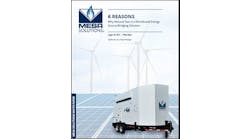What’s behind Massachusetts top ranking on the energy efficiency scorecard? What can people learn from the ACEEE report and are there more ways to save on energy? Matthew Lanfear, CEO of Great Eastern Energy explains.
On Oct. 21, the American Council for an Energy-Efficient Economy (ACEEE) released its 2015 State Energy Efficiency Scorecard. The ranking of the states is issued annually with the support of the US Department of Energy. The states where Great Eastern Energy operates in the Northeast are performing particularly well: Massachusetts ranked first in the country – for the fifth year in a row – and New York ranked ninth. Check out ACEEE’s U.S. map with all the state rankings here.
ACEEE ranks states according to six categories:
- Utility programs
- Transportation
- Building energy codes
- Combined heat and power
- State initiatives
- Appliance standards
The report concludes that, based upon experimentation at the state level around the country, dramatic gains in energy savings are possible. State policymaker efforts have been most sustained in the Northeast, and the results are now coming in. ACEEE notes in the report, “Energy savings continue to rise, with states in the Northeast proving that electricity savings of 2%—even upwards of 3%—are possible.”
How are states achieving 2%-3% average annual improvements in energy savings? They are providing all kinds of incentives to businesses, homeowners, and utilities. Many are also mandating that utilities pursue energy efficiency programs across the board – in industry, in the commercial sector, and in homes. States, and the utilities they regulate, are pouring money into programs to directly incentivize homes and businesses to invest in energy-efficient equipment. ACEEE Executive Director, Steve Nadel, recently noted, “Utilities across the United States invested more than $7 billion in energy efficiency over the past year alone.” Massachusetts, under the umbrella Mass Save, has robust, targeted energy equipment rebate programs for businesses; ACEEE rates them the best in the country. In New York, commercial entities also have ample opportunities through NYSERDA’s rebate programs.
States are combining these programs with broad visions for change. Some states, including New York, through its Reforming the Energy Vision process, are rebuilding their energy systems from the bottom up, structuring utility compensation not by how much electricity or gas they sell, but by how well they manage supply and demand on the grid – including by helping ratepayers reduce their consumption. Massachusetts retained ACEEE’s top spot for the fifth consecutive year based on a strong commitment to energy efficiency under its Green Communities Act, which helps every community in the state save energy.
In total, these programs are impactful, and growing: According to ACEEE, savings from electricity efficiency programs in 2014 totaled roughly 25.7 million megawatt-hours (MWh), a 5.8% increase over 2013. These savings are equivalent to about 0.7% of total retail electricity sales across the nation in 2014. Gas savings for 2014 were reported at 374 million therms, a 35% increase over 2013. These programs not only provide direct rebates to ratepayers; they save the ratepayers millions of dollars on gas and electricity – particularly in the Northeast, where electricity and gas rates are among the highest in the country. By participating in state energy efficiency rebate programs, businesses have tremendous potential to recoup investments in energy-saving equipment and systems even faster.
Matthew Lanfear is CEO of Great Eastern Energy.






